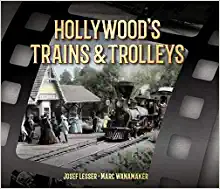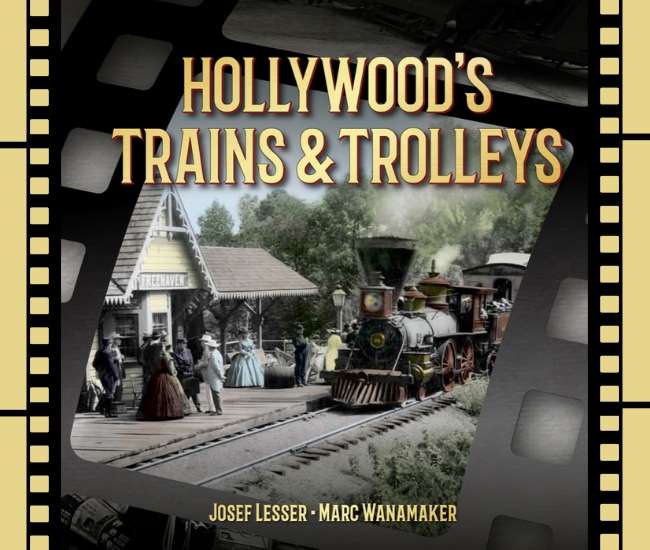Hollywood's Trains & Trolleys by Josef Lesser, Marc Wannamaker
What's It About?
Names like Chaplin, Garbo, Keaton and Stanwyck among countless others come to mind when one thinks of the early days of Hollywood.But another “star” for many of those films, an essential “role player” without legions of fans cramming for autographs, was a vehicle that got actors to their locations and often served as backdrops or even on-screen “performers” minus a speaking part: the streetcar.
The transportation modes so crucial to this budding industry are glorified in a magnificent coffee table-style work of photography and history in Hollywood’s Trains & Trolleys, written by Josef Lesser and Marc Wanamaker and published by (who knew) the Los Angeles Railroad Heritage Foundation.
“The streetcars were the dominant means of transportation for the first 25 years of the twentieth century. Real estate for the film companies was readily available, and a location in the close proximity of a streetcar line was a necessity to transport its workforce, including film extras and employees. Not only were the early movies produced on outdoor stages and sets but also because ‘it had to move,’ the streetcars that were merely steps away from the studio quickly became … even a ‘star’ for many movies.”
Ironically, trains and trolleys got their first cameo appearance far away from the Hollywood hills — in New Jersey, when Thomas Edison in 1903 made The Great Train Robbery, which employed railroad trains and stations and told a story with plenty of motion. It thus set the stage for the many films that are documented in the book. Practically all the movies examined were produced within a 30-mile radius of Hollywood, with studio executives and location experts making optimum use of the vast land and agreeable weather.
While the book presents marvelous images and descriptions of the many movies that employed trains and stations as integral parts of their filmmaking, it also traces the origins of how Hollywood as an entity came to be.
Says Lesser, “Marc Wanamaker and I aimed to blend his extraordinary knowledge … in just about everything having to do with Hollywood, the development of the motion picture industry and its relevance today, with my background in motion picture history and curatorial and archival experience.”
If it’s nostalgia and history you’re after, and you happen to be a film buff, you’ve come to the right place with Hollywood’s Trains & Trolleys.
Fittingly, the book’s final chapter focuses on the end car of the passenger train, also known as an observation car. It was often used by politicians on the campaign trail, and “any self-respecting bandit cowboy always jumped aboard … using the end of the train’s deck.”
And who can’t conjure up an image of a classic film ending with the actors waving goodbye from the rear platform, “as the train disappeared over the horizon.”
Hollywood’s Trains & Trolleys is available for purchase.
Buy this Book!
Amazon




